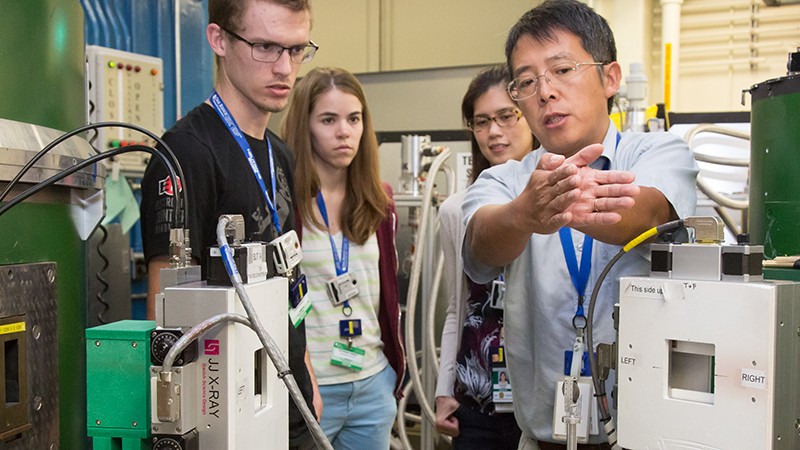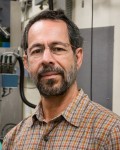A class of 60 neutron-scientists-in-training arrived at ORNL last week for the 18th annual National School on Neutron and X-ray Scattering.
The program, also known as the NXS School, hosts graduate students from all over the United States and Canada with a variety of academic backgrounds, from chemistry and physics to life sciences. The 60 students this year were chosen from more than 200 applications, representing a diverse, high quality research body.
"They are a very bright and capable group," says Bryan Chakoumakos, structure of matter group leader and scientific director of the NXS School at ORNL. "It seems like every year the quality of the students gets even better. We're more discerning in the selection process, but we also have a good reputation that attracts the best students."
The NXS students got an in-depth education on neutron generation and scattering in a series of lectures given by staff members from the Lab and the neutron science community. They also had the opportunity to perform neutron experiments on 18 instruments in the Spallation Neutron Source and the High Flux Isotope Reactor.
The program would not be possible without the help of more than 100 people teaching, lecturing and assisting the students during their time at the lab.
"It's certainly our biggest outreach effort from the neutron group," Bryan.
The Oak Ridge portion of the school wraps up at the end of the week and moves to Argonne National Laboratory, where the students will continue their studies on Argonne's Advanced Photon Source X-ray synchrotron.
"It's been really neat so far. I've been really enjoying how physical the triple-axis spectrometer is, with all the bits you can take off and swap out," said Robert Bell, a materials science and engineering doctoral student at Cornell University.
Bell, like many students at the school, had research experience with X-rays at his home institution, but had never used neutron scattering.
"The general truth is there are more X-ray users than neutron users," Bryan says. "That's part of the reason why we have this school, is to promote our neutron facilities."
The advanced technology available at HFIR and SNS seemed daunting to some newcomers, but offered lots of exciting new possibilities to researchers such as Bell.
"I've been very pleased to find out that it gives a lot more contrast to the results. I'll almost certainly use this technology in the future," Bell said.
There were a few students, like Zongyao Li, a physicist and materials scientist at the University of Texas at Austin, who had neutron science experience and continue to use the technology in their research. Li worked in a user group on the spallation neutrons and pressure diffractometer at SNS twice before and came to the NXS School to learn about the other instruments and expand his neutron science skillset.
"When you track the users after they leave, most of them do come back and use one or both of our facilities," Chakoumakos said. "It's a big deal and something the lab should be proud of." -- By Sean Simoneau






